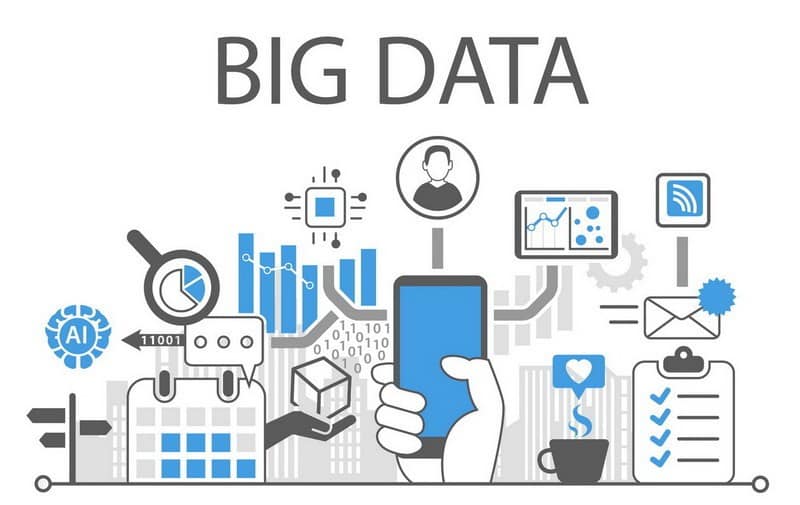The Internet revolutionised the world and has infiltrated nearly every aspect of our daily lives.
More applications – e-commerce, social networks, communication platforms, banking, etc – motivated more people to get “connected”.
Smartphones brought with them another giant leap forward, making the web accessible on devices that could be kept in our pocket, and with them grew the volume of users, apps, and the amount of time we were prepared to spend online.
Today, we are in the midst of a giant Internet of Things (IoT) revolution. In less than 3 decades, we have amassed close to close to 4.7 billion internet users globally, with 3.5 billion of them being smartphone users.
Furthermore, it is estimated that by 2030, close to 50 billion devices will comprise the Global IOT network: up a staggering 150% from the number of currently connected devices.
The telecom infrastructure, device ecosystem, computing power, and several layers of underlying software frameworks that have together propelled us where we are, are also fuelling a data revolution at a scale.
(Big) Data is reshaping products, strategies, services, offerings, and much more.
There is so much rich information available that businesses are in a luxurious position where they can make informed decisions based on substantiated market or consumer behavioural diagnostics.
Data is also at the heart of automation, AI and ML (together clubbed as hyper-automation) and is enhancing productivity, improving efficiencies, saving costs, and helping reshape products and services.
The normalisation and integration of technology and the usage of Big Data is happening at pace. There can be no question that businesses must have a plan in place to incorporate these
Big Data & Automation Strategy For Businesses
Businesses, irrespective of their industry or size, must have a (Big) Data Strategy to be future-ready and effectively compete in their space.
Data must be imagined as the core, underlying layer on which both Technology and Business must operate.
It is the layer on which most, if not all, future workflows operate upon. It is imperative, as a result, for Businesses to answer key questions around core levers:
- Infrastructure: Does the right software and hardware infrastructure exist to capture “all” possible data – Customers, Sales, Finance, Contact Centre(s), Customer Satisfaction, Partners, etc?
- Disjointed vs Centralised Systems: Does data (from different systems or departments) reside in disjointed systems, or is it centralised?
- Huma- led vs Automated: Does the MIS / Dashboards / Decision making involve substantial “human” effort and time, or is it automated?
- Exhaustive & Accurate: Is data available to leaders exhaustive across dimensions, providing historical trends, comparisons, and in-depth; and is all of this truly accurate?
- Timely and Efficient: Is it available timely, and efficiently?
- Personalisation: Are products and services able to drive personalisation, increase engagement, retention, and satisfaction?
Big Data Architecture
From the above framework, it is easy to see what businesses should strive toward: – their data must ideally be centralised, largely automated, in-depth and accurate.
This can be achieved by introducing some core components:
- Move from siloed Excel-based data tracking to Cloud-based centralised data-warehouse(s)
- Create department / workflow-specific data pipelines that create deeper analytics, extract insights, automation, and more
- Invest in Dashboarding and Visualization software as part of the stack to improve exhaustiveness and efficiencies and also help in ad-hoc analysis & reporting
- Create Rule Engines and Automation to drive alerts and notifications
- Develop a qualified core team that can progressively automate, and integrate AI / ML models, to personalize offerings, improve customer service levels, and raise overall efficiencies, and more
Refer to the Experts
As with any large initiative, incorporating data and data-led efficiencies into an organisation is a process.
It requires an assessment of existing resources, and planning toward a talent pool and both technology and business stacks that will support the business in the future.
At Reverside, an IT Consulting and services company, we are focused on supporting our clients with their Big Data requirements and creating an actionable strategy to get them to their desired destination.
We pay close attention to market trends and note that South Africa is the second-largest investor in Big Data, as revenues for big data and analytics (BDA) in the Middle East and Africa totalled $1.98 billion in 2016.
This is according to the latest Worldwide Semi-annual Big Data and Analytics Spending Guide from International Data Corporation (IDC).
The trend of importing our requirements continues and is constrained by the skills gap in the ICT industry.
With this in mind, we launched Geeks4Learning, a MICTSETA accredited academy that is focused on developing local ICT skills and talent.
This academy hosts a suite of courses and learnerships on Big Data and other technology disciplines which we will leverage to train young graduates with the requisite skill sets and assessment tools to build a pool of resources who will be assigned to our clients’ projects.
Readying your business to succeed in this new age of Big Data and Hyper Automation is a process, but one that should be started immediately for your business to optimise its benefits.
Thankfully, there are industry specialists who will work with you to achieve success in this exciting IoT era.
- This article is republished from The Bulrushes under a Creative Commons license. Read the original article.



1 Comment
Pingback: Big Data And Hyper-Automation: New Business As Usual | My Blog